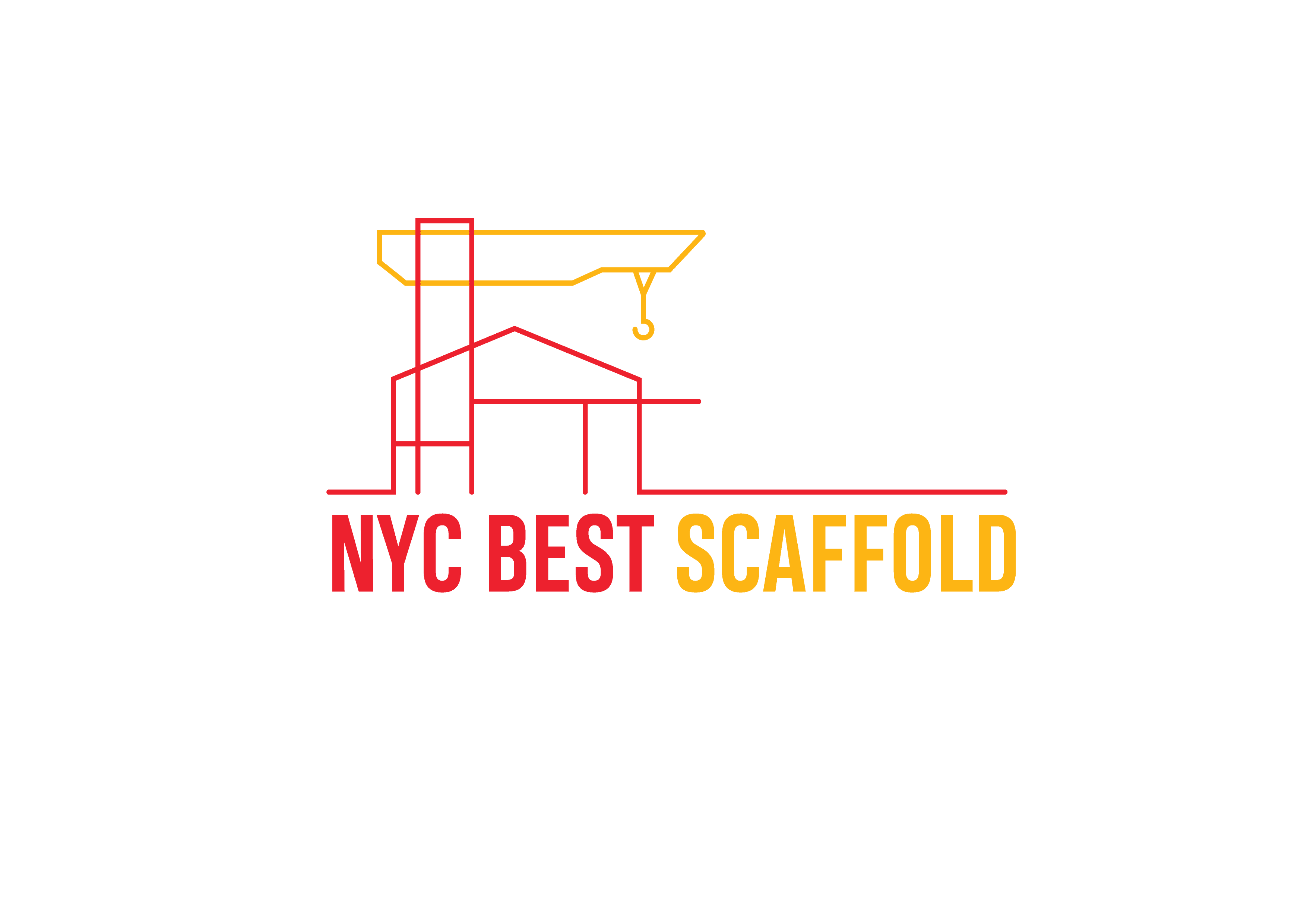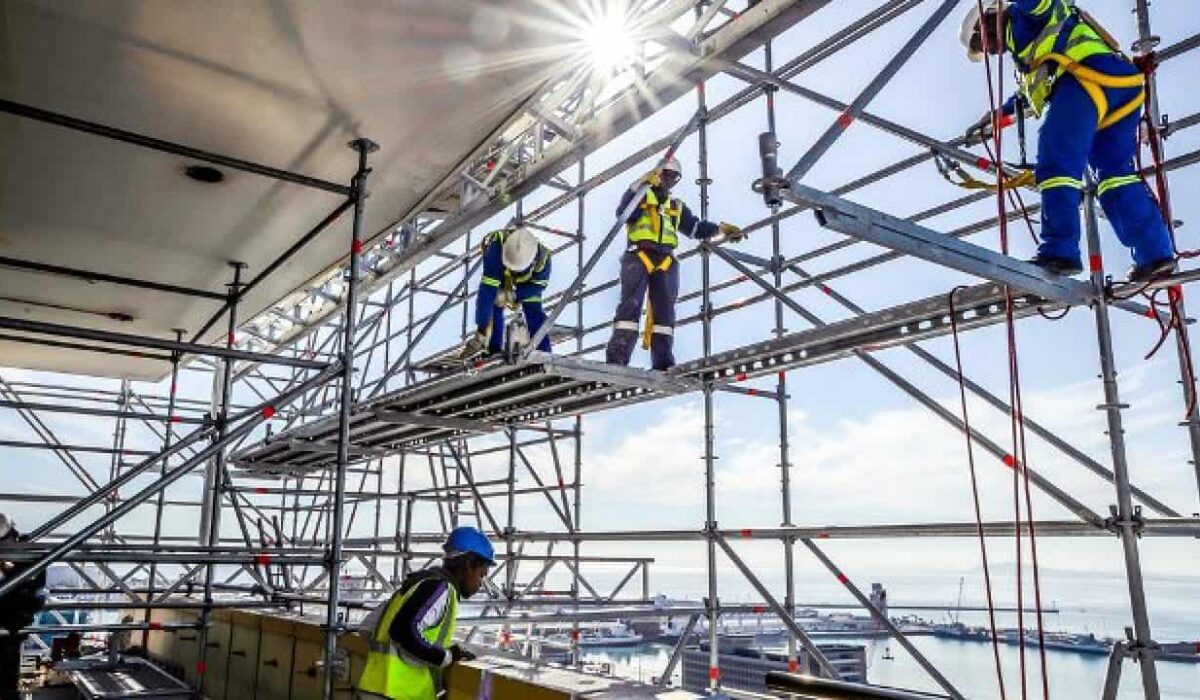New York City, the city that never sleeps, is one of the most dynamic and fast-paced cities in the world. It is constantly evolving, with new construction projects springing up every day. From iconic skyscrapers to smaller residential buildings, scaffolding is an integral part of the construction process. Without scaffolding, it would be impossible to work at height safely, making scaffolding companies in NYC an essential part of the city’s construction industry.
In this comprehensive guide, we will walk you through everything you need to know about scaffolding companies in NYC, including the types of scaffolding, the regulations that govern their use, how to choose the right company for your needs, and more.
What is Scaffolding and Why is it Important?
Before diving into the details of scaffolding companies in NYC, it’s important to understand exactly what scaffolding is and why it’s crucial for construction projects.
Scaffolding refers to a temporary structure used to support workers, materials, and tools during the construction, maintenance, or repair of buildings, bridges, and other large structures. It provides a safe and stable working platform at elevated heights, making it possible for construction workers to complete tasks such as painting, bricklaying, and window installation.
Scaffolding not only provides safety for workers but also enhances the efficiency of the construction process. Without scaffolding, working at heights would be far more difficult and dangerous. Furthermore, scaffolding also helps in preventing accidents and injuries that could arise from unstable surfaces or poorly constructed platforms.
Types of Scaffolding
There are several types of scaffolding used in the construction industry, each with its specific application. The most common types of scaffolding include:
- Frame Scaffolding: Frame scaffolding is the most popular type of scaffolding used in construction projects. It consists of a system of vertical and horizontal frames connected by braces and cross braces. This type of scaffolding is quick to set up and is versatile enough to be used in a variety of building projects.
- Suspended Scaffolding: Suspended scaffolding is used for high-rise buildings and works by suspending a platform from ropes or cables. It is typically used for exterior work on tall buildings and can be adjusted in height. Suspended scaffolding is ideal for projects that require access to the upper floors of a building, such as window washing, painting, or repairs.
- Rolling Scaffolding: Rolling scaffolding is similar to frame scaffolding but includes wheels or casters for mobility. This type of scaffolding is ideal for projects that require moving the platform from one location to another, such as indoor work in warehouses or commercial buildings.
- Trestle Scaffolding: Trestle scaffolding is used for low-height construction work. It consists of a platform supported by adjustable legs, typically ranging from 5 to 10 feet high. This type of scaffolding is commonly used for indoor projects and smaller-scale renovations.
- System Scaffolding: System scaffolding is a modular scaffolding system that can be configured for various types of construction projects. It is highly adaptable and is often used for complex or large-scale projects, such as bridges, tunnels, and industrial facilities.
Regulations Governing Scaffolding in NYC
In a city like New York, safety regulations are strict, especially when it comes to construction and scaffolding. The city has a set of laws and regulations that govern how scaffolding must be used to ensure the safety of workers and the public.
Local Law 52 (LL52) and the Scaffold Safety Law
One of the most important pieces of legislation regarding scaffolding in NYC is Local Law 52 (also known as the Scaffold Safety Law), which was enacted to improve safety for workers working at height. Under this law, property owners and contractors are required to ensure that scaffolding meets specific safety standards.
Some key provisions of this law include:
- Scaffolding must be designed and constructed according to the appropriate engineering standards.
- All scaffolds must be properly maintained and inspected to ensure that they are in safe working condition.
- Property owners and contractors are responsible for providing fall protection systems for workers on scaffolds.
- In case of accidents, workers have the right to sue for damages if proper safety measures were not followed.
Other Relevant NYC Building Codes
In addition to Local Law 52, scaffolding companies in NYC must also comply with other local building codes and OSHA (Occupational Safety and Health Administration) regulations. These codes and regulations outline specific requirements for scaffolding installation, inspection, maintenance, and removal.
Some of the key requirements include:
- Structural integrity: Scaffolds must be able to support their own weight as well as the weight of workers, materials, and tools.
- Guardrails and fall protection: Scaffolds that are more than 10 feet above ground level must be equipped with guardrails and fall protection systems to prevent workers from falling.
- Inspection and certification: Scaffolding must be inspected regularly by a qualified person to ensure that it is safe to use.
- Training: Workers who use scaffolding must be trained in proper safety procedures.
How to Choose the Right Scaffolding Company in NYC
Choosing the right scaffolding company is crucial to the success of your construction project. Not all scaffolding companies are created equal, so it’s important to do your due diligence and choose a company that can meet your specific needs. Here are some factors to consider when selecting a scaffolding company in NYC:
Experience and Reputation
Experience matters in the scaffolding industry. A reputable company with years of experience will have the necessary knowledge and expertise to ensure that your scaffolding is installed safely and efficiently. Check online reviews, ask for references, and speak with past clients to get a sense of the company’s reputation.
Licensing and Insurance
Make sure that the scaffolding company is licensed and insured to operate in New York City. This ensures that they comply with all local laws and regulations. Furthermore, proper insurance protects you from liability in case of accidents or property damage.
Quality of Equipment
Not all scaffolding equipment is the same. The quality of the scaffolding materials and equipment is crucial to ensuring the safety of workers. Make sure the company uses high-quality, durable scaffolding that meets safety standards.
Safety Standards
A good scaffolding company should prioritize safety. Ensure that the company follows OSHA regulations and local laws regarding scaffolding safety. They should be able to provide you with a safety plan and regularly inspect and maintain their scaffolding.
Cost
While cost should not be the only factor in choosing a scaffolding company, it’s still important to consider your budget. Get quotes from multiple companies and compare their pricing. Be wary of companies that offer significantly lower prices, as this may indicate subpar equipment or poor safety practices.
Project Timeline
Time is often of the essence in construction. Make sure the scaffolding company can meet your project timeline and provide a clear schedule for when they will install and remove the scaffolding.
Customer Service
Choose a company that provides excellent customer service. They should be responsive to your needs, easy to communicate with, and willing to answer any questions you have throughout the process.
Benefits of Hiring a Scaffolding Company in NYC
Hiring a professional scaffolding company comes with a number of benefits:
- Safety: A reputable scaffolding company ensures that the scaffolding is installed safely and securely, reducing the risk of accidents or injuries.
- Efficiency: Professional scaffolding companies have the expertise and equipment to set up scaffolding quickly and efficiently, which helps to keep your project on schedule.
- Compliance: A good scaffolding company will ensure that their work is compliant with all local laws and regulations, which can save you from costly fines and legal issues.
- Cost-Effectiveness: While it may seem expensive to hire a scaffolding company, the cost of scaffolding is often offset by the safety, efficiency, and compliance benefits. Plus, professional scaffolding can reduce delays caused by accidents or issues with poorly installed scaffolding.
- Flexibility: Scaffolding companies often offer flexible solutions to meet your specific project needs, whether it’s for a small residential renovation or a large-scale commercial project.
Conclusion
Scaffolding is an essential part of the construction process in New York City. Whether you’re working on a skyscraper or a smaller residential project, it’s important to choose the right scaffolding company to ensure that your project is safe, efficient, and compliant with all regulations.
By understanding the different types of scaffolding, the regulations that govern their use, and how to choose the right scaffolding company, you can make informed decisions that will help your project run smoothly from start to finish. Safety should always be your top priority, and working with a reputable scaffolding company is one of the best ways to ensure that safety is maintained throughout the construction process.


2 Comments
Comments are closed.